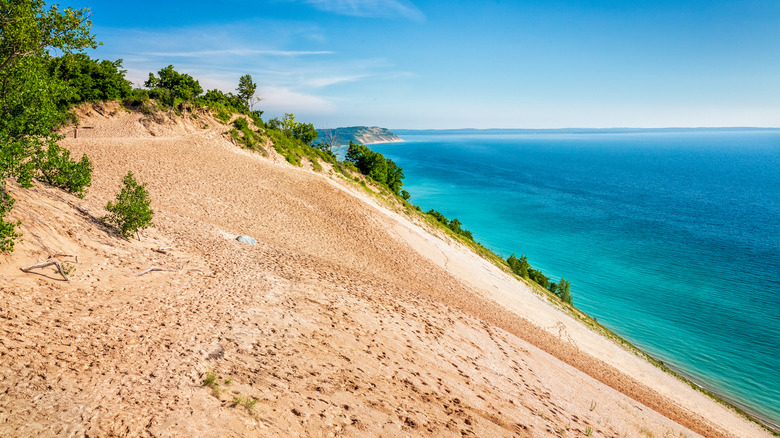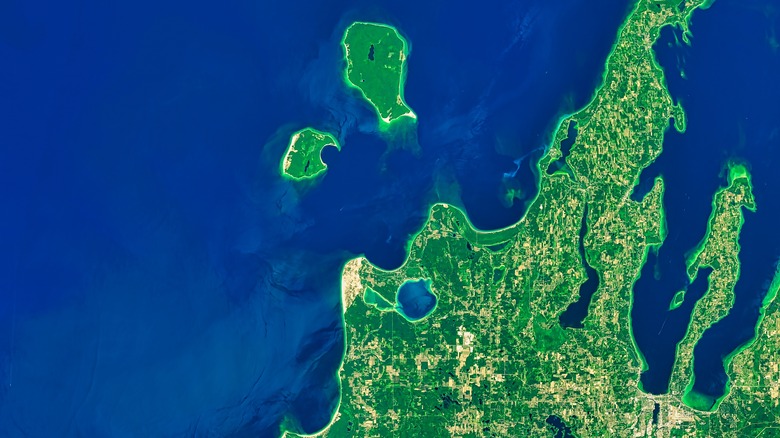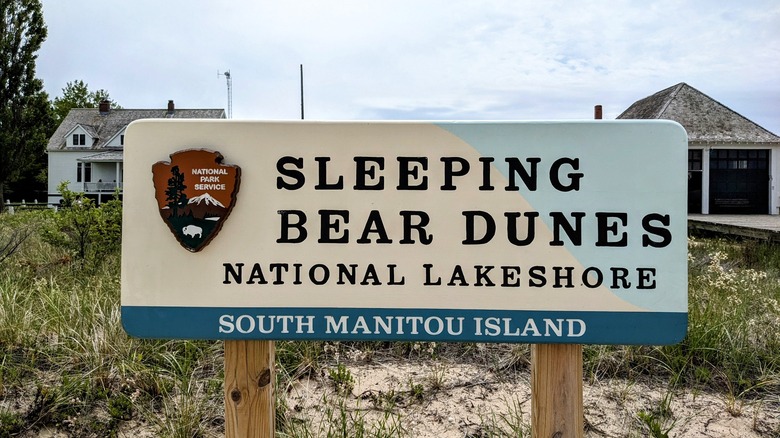This Common Mistake At Sleeping Bear Dunes National Lakeshore Will Cost You Thousands
When you hear about a common mistake at Sleeping Bear Dunes National Lakeshore that tourists make, you might naturally assume it has something to do with bears. However, this situation actually involves the seemingly harmless dunes. Ascending to the top of a towering sand dune can be a thrilling experience, and the temptation to careen down and while yelling "Weeee!" is understandable. You just better make sure beforehand that you're able to get back up, because that's a very serious issue at this national park near Traverse City, Michigan.
The scene of this potential error in judgement is at the No. 9 Overlook atop a 450-foot-tall dune called Sleeping Bear Dune Climb, which offers hikers who made it to the top a stunning view of Lake Michigan. But as with any high-up view, numerous hikers also want to slide or hike or freewheel down the sandy bluff. Due to exhaustion and sometimes injury on the way down, they often struggle to climb back up, and the difficult rescue can cost up to $3,000, depending on a few factors.
Why it costs so much
It may sound offhand like an pretty steep charge, but this isn't like getting a cat out of a tree or locking your keys in the car. People have been getting stuck for years, and the cost of a rescue can be in the ballpark of $652. But that's when the water levels are low enough that rescue crews can take an ATV down the beach from a nearby village to where someone is stranded. When the lake is higher, as the warning sign makes clear: "The only way out is up."
In that scenario, the National Park Service may send someone down with food and water to assist the hiker. More complicated rescues require assistance from firefighting organizations, and crews must sometimes do advanced rescues that involve multiple personnel using 1,400-feet of rope to hoist the stranded hikers up from below. It's also possible, though ultimately rare, to deploy a 30-foot fire rescue boat to the area.
It's not the park that will charge thousands for a rescue, but if other organizations are requited to provide assistance, that's when the major costs can come in.
Visitors are getting the message
Rescues have dropped significantly in recent years, from 31 calls in 2017 to just 11 between Memorial Day and Labor Day 2023. Even though $3,000 is not the guaranteed bill in the case of rescue, the mere prospect of it seems a helpful deterrent, aided by its inclusion on the big warning sign at the overlook, which reads: "Avoid getting stuck at the bottom! Lake levels are high — the only way up is out. Rescues cost $3,000. Keep yourself and our rescuers out of danger."
Helping make sure hikers of all experience levels get the message are also members of the Preventative Search and Rescue Program, who patrol the area carrying snacks, water, sunscreen, and plenty of valid arguments to convince people not to go down the dune. Hopefully people continue to listen, though one can imagine someone completely missing the point and using the warning sign to slide down the dune.


